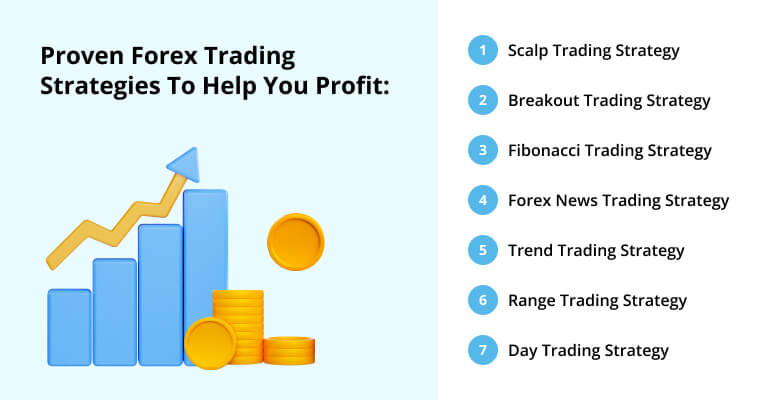Introduction
Forex trading, or foreign exchange trading(1), involves the buying and selling of currencies on the global market. It’s a decentralized market, meaning trades occur over-the-counter (OTC)(2) rather than on a centralized exchange. For Indian traders, understanding the nuances of forex trading is essential to navigate(3) the opportunities and challenges effectively. This guide will delve into the basics of forex trading(1), regulatory considerations, and strategies to help you get started.

Understanding Forex Trading
1. What is Forex Trading? Forex trading involves the exchange of one currency for another, usually in pairs like USD/INR, EUR/USD, etc. The goal is to profit from changes in the exchange rate between these currencies(2). The forex market is the largest and most liquid market(4) globally, with a daily trading volume exceeding $6 trillion.
2. Key Concepts:
- Currency Pairs: Currencies are quoted in pairs, where the first currency (base) is compared against the second (quote). For example, in the USD/INR pair, USD is the base currency, and INR is the quote currency.
- Pips: The smallest price move in a currency pair is called a pip. For most pairs, one pip equals 0.0001.
- Leverage: This allows traders to control a large position with a small amount of capital. While leverage can amplify profits, it also increases the risk of significant losses.
- Margin: The collateral required to open and maintain a leveraged position(5). Margin levels must be maintained to avoid a margin call from your broker.
Getting Started with Forex Trading in India
1. Regulatory Landscape: Forex trading in India is regulated by the Reserve Bank of India (RBI) and the Securities and Exchange Board of India (SEBI). Indian residents are only allowed to trade currency pairs that include the Indian Rupee (INR), such as USD/INR, EUR/INR, GBP/INR, and JPY/INR. Trading other forex pairs without proper authorization can lead to legal issues.
2. Choosing a Broker:
- Regulated Brokers: Ensure the broker is regulated by SEBI or other reputable international authorities.
- Trading Platform: Look for a user-friendly platform with robust charting tools and a reliable trading interface. Popular platforms include Meta Trader 4 (MT4) and Meta Trader 5 (MT5).
- Fees and Commissions: Compare spreads, commissions, and other fees across different brokers. Low-cost trading can significantly impact your overall profitability.
- Customer Support: Efficient customer service is crucial for resolving issues promptly. Check for brokers that offer 24/7 support.
Developing a Trading Strategy
1. Fundamental Analysis: Fundamental analysis involves evaluating economic indicators, such as interest rates, GDP growth, employment rates, and political stability, to predict currency movements. For instance, if the RBI raises interest rates, the INR may strengthen due to increased foreign investment.
2. Technical Analysis: Technical analysis focuses on historical price data and chart patterns to forecast future price movements. Common tools include:
- Moving Averages: These help identify trends by smoothing out price data.
- Relative Strength Index (RSI): An oscillator that measures the speed and change of price movements, indicating overbought or oversold conditions.
- Support and Resistance Levels: Key price levels where the currency pair tends to reverse direction.
3. Risk Management: Risk management is crucial to long-term success in forex trading. Key practices include:
- Stop-Loss Orders: Automatically close a trade at a predetermined level to limit losses.
- Position Sizing: Adjust the size of your trades based on your risk tolerance and account size.
- Diversification: Avoid putting all your capital into a single trade or currency pair.

Advanced Trading Strategies
1. Carry Trade: A carry trade involves borrowing a currency with a low-interest rate and investing in a currency with a higher interest rate. The goal is to profit from the difference in interest rates. However, this strategy carries significant risk if exchange rates move unfavorably.
2. Scalping: Scalping involves making numerous small trades throughout the day to capitalize on minor price fluctuations. This strategy requires a high level of discipline and quick decision-making.
3. Swing Trading: Swing traders hold positions for several days or weeks, aiming to profit from short- to medium-term price movements. This approach requires less time monitoring the market compared to day trading.
Practical Tips for Indian Traders
1. Stay Informed: Keep up-to-date with global economic news and events that can impact the forex market. Economic calendars and financial news websites are valuable resources.
2. Practice with a Demo Account: Before risking real money, practice trading with a demo account to gain experience and test your strategies in a risk-free environment.
3. Continuous Learning: Forex trading is a dynamic field that requires continuous learning. Consider joining trading communities, attending webinars, and reading books on forex trading to enhance your knowledge.
4. Legal Compliance: Ensure that all your trading activities comply with Indian regulations. Unauthorized forex trading can lead to legal penalties and financial losses.
Conclusion
Forex trading in India offers exciting opportunities for profit, but it’s essential to approach it with a solid understanding of the market, a well-defined strategy, and strict risk management practices. By staying informed, choosing the right broker, and continuously honing your skills, you can navigate the complexities of the forex market and work towards achieving your financial goals. Remember, successful trading is a journey that requires patience, discipline, and continuous learning.
Forex Trading Tutorials India FAQs
1. What is Forex Trading?
Forex trading involves buying and selling currencies on the foreign exchange market. Traders aim to profit from fluctuations in currency exchange rates. For example, if you believe the value of the US dollar will increase compared to the Indian rupee, you would buy USD/INR and sell it when the rate goes up.
2. Is Forex Trading Legal in India?
Yes, forex trading is legal in India, but it is regulated by the Reserve Bank of India (RBI) and the Securities and Exchange Board of India (SEBI). Indian traders can only trade currency pairs that include the Indian Rupee (INR), such as USD/INR, EUR/INR, GBP/INR, and JPY/INR.
3. How Can I Start Forex Trading in India?
To start forex trading in India, follow these steps:
- Learn the Basics: Understand the fundamental concepts and terminology of forex trading.
- Choose a Broker: Select a SEBI-regulated broker that offers a user-friendly platform and competitive fees.
- Open an Account: Register with the broker and complete the KYC (Know Your Customer) process.
- Fund Your Account: Deposit funds into your trading account.
